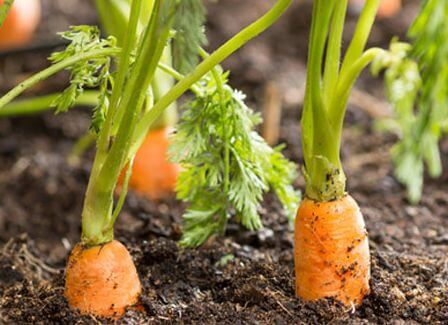If you’re interested in cultivating carrots (Daucus carota), it’s crucial to note that they thrive in cooler temperatures, making early spring and late fall ideal for their growth. Optimal temperatures range from nighttime lows around 13°C to daytime averages of 24°C. Carrots adapt well to small gardens, flower beds, and even tolerate some shade.
Here are some tips on growing carrots:
- Prepare the Soil:
- Clear the soil surface of weeds, stones, and large pieces of bark.
- Enrich the soil with potting soil to promote carrot growth.
- Optimal soil for carrots is sandy loam with good drainage, avoiding clayey soils that result in slow maturation and rough, unattractive roots.
- Site Preparation:
- Choose a soft and aerated area for planting carrots.
- Fertilize the soil appropriately and use a rake to mix it thoroughly.
- Growing Carrots from Seeds:
- Easily acquire carrot seeds from supermarkets, garden centers, or online platforms like Amazon.
- Plant seeds in rows for proper root development, approximately 2.5cm deep and 3 to 5cm apart.
- When carrot plants reach 10cm in height, thin them to 5cm apart, ensuring even spacing.
- Weed Control:
- Prevent weed invasion, as they compete for essential nutrients and hinder carrot development.
- Regularly weed by hand as soon as weeds emerge.
- Carrot Growth Timeline:
- Carrots grow continuously after planting and have a relatively short maturation period.
- Initiate the first harvest in mid-spring, post-frost, and continue planting new seeds every two weeks for a prolonged harvest through the fall.
- Harvesting Carrots:
- Begin harvesting carrots when they reach the size of a finger.
- Alternatively, leave them in the ground until winter with proper garden covering.
- To check carrot size, gently remove soil from the top of the root and assess.
- Harvest by gently lifting carrots from the ground.
By following these guidelines, you can enjoy a bountiful carrot harvest with sweet and tender roots.
Show Comments



